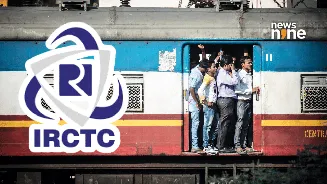Milan's Turbulent Period
The operation unfolded in the aftermath of a period of significant upheaval in Milan. Details regarding what triggered the disruption are central to grasping
the necessity of the Air India rescue flight. The circumstances leading to this event created a situation where many individuals, presumably Indian nationals or those with travel plans involving India, found themselves stranded. This situation necessitated the airline's intervention, underscoring its commitment to its passengers. The disruption likely created considerable inconvenience, including potentially disrupted travel plans, accommodation issues, and uncertainty for those affected. The immediate need was a secure way to return to their home country. This situation brought to light the critical role of airlines in crisis situations. The Air India response was thus a display of how airlines manage operational challenges while assisting the passengers.
Air India's Swift Response
Air India swiftly organized and executed a rescue flight, highlighting its capacity for rapid mobilization and efficient operations. The planning and execution of this mission were complex, involving co-ordination with various entities to get the passengers home. Details about the aircraft used, the crew involved, and the specific route are key. The operational challenge in a situation of this magnitude likely involved a significant effort in terms of logistics, including obtaining necessary permissions, preparing the aircraft, and assembling the crew. The flight's departure point in Milan and its arrival in Delhi would have been meticulously planned. The airline’s ability to act quickly indicates strong emergency protocols and the airline’s dedication to providing assistance during crises. This quick reaction highlighted Air India’s role as a reliable transport provider committed to its customers.
Passengers' Journey Back
The experience of the passengers, who were ultimately rescued and brought back to Delhi, is a central focus. Their perspectives offer insights into the impact of the disruption and the relief provided by the rescue flight. The journey itself, from the time they learned about the rescue flight to their arrival back in Delhi, forms a key narrative. Information about how the passengers were informed about the flight, how they prepared for it, and the emotional context of their experiences is essential. The process included aspects such as checking in, boarding, the flight itself, and, finally, the reunion with family and friends in Delhi. Details about passenger support, such as any aid, or special provisions available, or the services available during the flight, would add depth to the account. This journey is a testament to the resilience of those involved.
Challenges Faced and Overcome
Operating the rescue flight likely involved a series of logistical and operational challenges. The specifics of these challenges and how Air India overcame them offer valuable understanding. These operational difficulties could have included obtaining air traffic clearances, managing the airport facilities, coordinating with ground staff, and ensuring the safety and comfort of the passengers. Any unforeseen difficulties or issues with the flight would also be crucial to cover, such as the management of weather conditions, aircraft maintenance issues, and the need for any in-flight medical assistance. The handling of these challenges highlights the professionalism and preparedness of the airline. The successful execution of the flight is a testament to the efficient teamwork.
Impact and Significance
The rescue flight’s broader impact and its significance for Air India and the stranded passengers is important to discuss. The operation's impact could be viewed in terms of its contribution to maintaining the airline’s reputation and the support offered to affected passengers. The flight highlights the airline's crucial role in crisis response, particularly in the event of unforeseen situations that disrupt travel plans. Examining the operation in the context of the larger air transport industry and its relationship with the affected passengers underscores the value of such actions. The relief offered to passengers is a prime demonstration of the airline’s duty to ensure the safety and well-being of its customers, especially when they face difficult and stressful circumstances. The rescue flight is a powerful illustration of the airline’s capacity to support its customers.

















